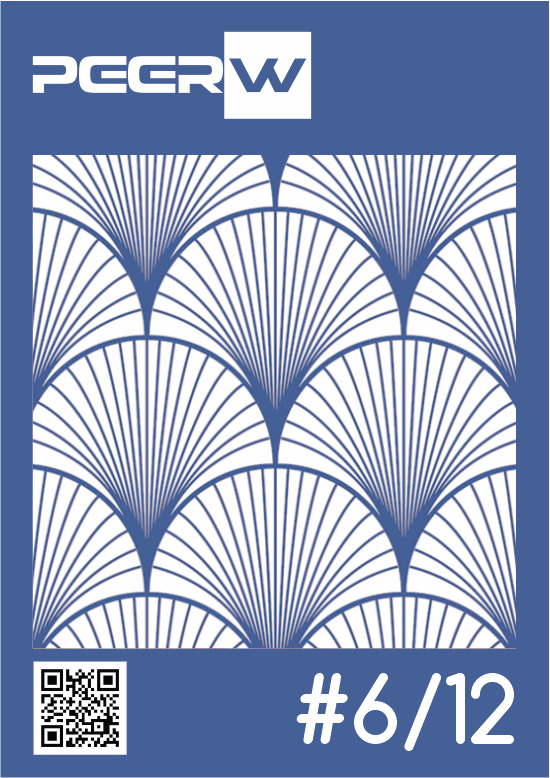Curcumin and piperazin in association with chemotherapy protocol for cutaneous lymphoma: animal clinical report
DOI:
https://doi.org/10.53660/PRW-607-4325Resumo
The anticancer properties of curcumin were associated with its ability to promote apoptosis, decrease metastatic potential, and proliferation inhibition of distinct tumor types. The objective of the present study was to describe an animal clinical case, reporting the combination of curcumin (450mg Curcuma longa L. rhizome extract), and piperine (15mg Piper nigrum fruit extract) associated with chemotherapy for cutaneous lymphoma treatment. The phytotherapeutic treatment was continued every 12 hours, and the chemotherapy protocol was a combination of doxorubicin, cyclophosphamide, vincristine, and prednisone. The patient demonstrated a partial response, identified by more than 50% of tumor diameter regression. However, the lesions relapsed in the sixth week, and the lomustine was used. The partial remission was again achieved, and the 19-week maintenance protocol with metronomic therapy using cyclophosphamide was introduced for ten consecutive months It was observed that these treatments provided quality survival for the cancer patient, demonstrating the benefit of this co-adjuvant therapy for the chemotherapy protocol cancer treatment. However, the total cure could not be achieved for this patient.
Downloads
Referências
ALMEIDA, E. M. et al. Therapeutic potential of medicinal plants indicated by the Brazilian public health system in treating the collateral effects induced by chemotherapy, radiotherapy, and chemoradiotherapy: A systematic review. Complementary therapies in medicine, v. 49, p. 102293, 2020.
ATTIA, Y. M. et al. Inhibition of aldehyde dehydrogenase-1 and p-glycoprotein-mediated multidrug resistance by curcumin and vitamin D3 increases sensitivity to paclitaxel in breast cancer. Chemico-Biological Interactions, v. 315, p. 108865, 2020.
CHAMANI, S. et al. Modulatory properties of curcumin in cancer: A narrative review on the role of interferons. Phytotherapy Research, 2023.
CHAN, C. M.; FRIMBERGER, A. E.; MOORE, A. S. Clinical outcome and prognosis of dogs with histopathological features consistent with epitheliotropic lymphoma: a retrospective study of 148 cases (2003–2015). Veterinary dermatology, v. 29, n. 2, p. 154-e59, 2018.
CRAY, M.; SELMIC, L. E.; RUPLE, A. Demographics of dogs and cats with oral tumors presenting to teaching hospitals: 1996–2017. Journal of veterinary science, v. 21, n. 5, 2020.
DETTWILER, Martina et al. Prognostic clinical and histopathological features of canine cutaneous epitheliotropic T-cell lymphoma. Veterinary pathology, v. 60, n. 2, p. 162-171, 2023.
FACINA, C. H. et al. Protective effect of the association of curcumin with piperine on prostatic lesions: New perspectives on BPA-induced carcinogenesis. Food and Chemical Toxicology, v. 158, p. 112700, 2021.
FONTAINE, J.; HEIMANN, M.; DAY, M. J. Canine cutaneous epitheliotropic T‐cell lymphoma: a review of 30 cases. Veterinary dermatology, v. 21, n. 3, p. 267-275, 2010.
GAHTORI, R. et al. Anticancer plant-derivatives: deciphering their oncopreventive and therapeutic potential in molecular terms. Future Journal of Pharmaceutical Sciences, v. 9, n. 1, p. 14, 2023.
HEIDARI, H. et al. Curcumin‐piperine co‐supplementation and human health: A comprehensive review of preclinical and clinical studies. Phytotherapy Research, 2023.
JIANG, J.L. et al. Identification of antitumor constituents in curcuminaoids from Curcuma longa L. based on the composition–activity relationship. Journal of Pharmaceutical and Biomedical Analysis, v.70, p. 664-670, 2012.
KITSOULIS, C. V., BAXEVANIS, A. D., AND ABATZOPOULOS, T. J. The occurrence of cancer in vertebrates: a mini review. Journal of Biological Research-Thessaloniki, v.27, n.9. 2020.
KUMAR, A. et al. Curcumin, The Golden Nutraceutical on The Road to Cancer Prevention and Therapeutics-A Clinical Perspective. Critical Reviews™ in Oncogenesis, 2023.
LIAO, D. et al. Curcumin protects against doxorubicin induced oxidative stress by regulating the Keap1-Nrf2-ARE and autophagy signaling pathways. Psychopharmacology, p. 1-12, 2023.
MAZARO, R. D. et al. Epidemiological, anatomopathological, and immunophenotypical aspects of cutaneous lymphomas in dogs. Pesquisa Veterinária Brasileira, v. 43, p. e07124, 2023.
MELLO-PEIXOTO, E.C.T. et al. Efficacy and Safety of Curcuma longa L.: Relevant Results for Cancer Treatment. Journal of Horticultural Science and Research, v.1, n.5, p.175-183, 2022.
MONTANER-ANGOITI, E.; MARÍN-GARCÍA, P.J.; LLOBAT, L. Epigenetic Alterations in Canine Malignant Lymphoma: Future and Clinical Outcomes. Animals, v. 13, n. 3, p. 468, 2023.
MIYAZAKI, K. et al. Curcumin-Mediated Resistance to Lenvatinib via EGFR Signaling Pathway in Hepatocellular Carcinoma. Cells, v. 12, n. 4, p. 612, 2023.
REBHUN R.B., et al. “CHOP chemotherapy for the treatment of canine multicentric T‐cell lymphoma”. Veterinary and comparative oncology, v.9, n.1, p. 38-44, 2011.
SARKOZY C.; SALLES G.; FALANDRY C. The Biology of Aging and Lymphoma: a Complex Interplay. Current Oncology Reports, v.17, n. 32, 2015.
SULTANA, S. et al. Molecular targets for the management of cancer using Curcuma longa Linn. phytoconstituents: A Review. Biomedicine & Pharmacotherapy, v. 135, p. 111078, 2021.
TWILLEY, D.; RADEMAN, S.; LALL, N. A review on traditionally used South African medicinal plants, their secondary metabolites and their potential development into anticancer agents. Journal of ethnopharmacology, v. 261, p. 113101, 2020.
YANG, L. et al. Curcumin increases the sensitivity of K562/DOX cells to doxorubicin by targeting S100 calcium-binding protein A8 and P-glycoprotein. Oncology Letters, v. 19, n. 1, p. 83-92, 2020.




